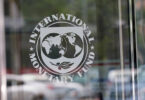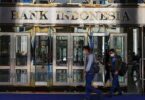F.P. Report
WASHINGTON: A Concluding Statement describes the preliminary findings of IMF staff at the end of an official staff visit (or ‘mission’), in most cases to a member country. Missions are undertaken as part of regular (usually annual) consultations under Article IV of the IMF’s Articles of Agreement, in the context of a request to use IMF resources (borrow from the IMF), as part of discussions of staff monitored programs, or as part of other staff monitoring of economic developments.
The authorities have consented to the publication of this statement. The views expressed in this statement are those of the IMF staff and do not necessarily represent the views of the IMF’s Executive Board. Based on the preliminary findings of this mission, staff will prepare a report that, subject to management approval, will be presented to the IMF Executive Board for discussion and decision.
Washington, DC – March 7, 2022
The economic recovery has been strong, but the outlook is confronted with downward external and domestic risks. While monetary policy needs to respond rapidly to inflationary pressures and the tightening of global financial conditions, a neutral fiscal stance is appropriate considering the negative output gap and risks to growth. Realigning the fiscal framework, consistent with a gradual fiscal consolidation, will help preserve confidence. Structural reforms are necessary to enhance the effectiveness of public services, promote the development of the private sector, and prevent potential growth from declining.
An Uncertain Outlook After a Strong Recovery
The Peruvian economy rebounded strongly from its deepest downturn in decades. The strong policy response in 2020 mitigated the impact of the pandemic and created the conditions for a rapid recovery. Progress in the vaccination campaign allowed a gradual lifting of Covid-19 mobility restrictions. Robust external demand, favorable terms of trade, and pent-up domestic demand contributed to real GDP rising by 13.3 percent in 2021, exceeding its pre-pandemic level in 21Q3, and to formal employment fully recovering. Volatility in financial markets increased amid heightened political uncertainty.
Peru is still bearing high social and economic costs from the pandemic. Peru lost many lives, having recorded one of the highest death rates globally. Structural weaknesses in the health care system required tight containment measures, which heavily affected economic activity in 2020. Real GDP remains below its pre-pandemic trend and labor force participation and total employment haven’t fully recovered. Poverty increased significantly in 2020 and is still above pre-pandemic levels despite some improvement in 2021.
The outlook is very uncertain, and downside risks prevail. Growth is expected to slow to 3 percent in 2022 as external conditions tighten and the policy stimulus is withdrawn. The main risks relate to the pandemic, a sharp tightening of global financial conditions, extended global supply chain disruptions, geopolitical tensions, and an abrupt growth slowdown in China, Peru’s main trading partner. Continued political uncertainty might have adverse effects on private investment and trigger more financial market volatility. In the medium term, labor productivity can be negatively affected by the scarring effects of the pandemic.
Peru maintains strong policy buffers and institutions that will help protect the economy from external and domestic risks. The fiscal deficit fell to 2.6 percent of GDP on the back of higher metal prices and soaring tax revenues, the collection of tax arrears, and the winding down of the 2020 fiscal stimulus measures. Public debt as a percentage of GDP is expected to decline in 2022. International reserves rose to US$78.5 billion (35 percent of GDP) in 2021, despite the current account deficit and unpreceded short-term capital outflows. These were more than offset by large inflows from public sector borrowing, foreign direct investment, the repatriation of foreign assets by pension funds to meet Congress-mandated extraordinary withdrawals, and the 2021 allocation of Special Drawing Rights. Peru has access to a Flexible Credit Line arrangement with the IMF in the amount of US$11 billion, which is awarded to countries with a track record of prudent policies and can be used as additional protection.
Addressing Inflation and External Risks
Monetary policy has responded appropriately to rising inflationary pressures, but further tightening is necessary to bring inflation under control. Driven by imported food and energy prices and exchange rate depreciation, headline inflation began rising early in the summer of 2021, rapidly exceeding the target range, and extending to core inflation and inflation expectations. The Banco Central de Reserva del Perú (BCRP) started tightening monetary policy in August 2021 and has steadily raised the policy rate since reaching 3.5 percent in February. Although inflationary pressures are less acute than elsewhere in the region, the monetary stance remains slightly expansionary and further tightening is warranted to stabilize expectations. Bringing inflation and inflation expectations withing the target range would help create more favorable conditions for economic growth.
External risks may also require a policy response. In the global context of rising policy rates, Peru, like other emerging market economies, is likely to experience heightened exchange rate volatility, which may feed through to inflation expectations. In the short term, intervention in the foreign exchange market may be warranted to alleviate pressures from dollarization and currency mismatch in the private sector. In the medium term, as dollarization declines, the need for frequent foreign exchange intervention will weaken, leaving more room for the exchange rate to play a larger role as the shock absorber and for financial markets to develop further. A protracted reaction to external risks may also warrant maintaining a tighter stance for longer.
Restoring the Fiscal Framework
In the short term, the fiscal stance is appropriate. The fiscal deficit would stand at about 2.7 percent of GDP in 2022, reflecting a prudent budget that envisions increased spending in health, education, and social protection. Public debt is sustainable, and Peru has some fiscal space. As the outlook is highly uncertain, the authorities should prepare contingency plans to contain slippages. Upside surprises should be used to rebuild fiscal buffers. With the need for Covid-related support subsiding, the use of emergency procedures to appropriate budget resources should be phased out.
The realignment of the fiscal framework, consistent with a gradual fiscal consolidation, will help preserve confidence in a volatile environment . The fiscal framework has served Peru well, and the authorities’ intention to realign the fiscal rules with a gradual consolidation path in the revised Medium-Term Macroeconomic Framework is welcome. The rules will help contain expenditure pressures, prioritize social spending, and preserve confidence. Based on current spending plans, a fiscal consolidation of 0.6 percent of GDP per year in 2023-2025 would be necessary to attain the authorities’ targets with a limited impact on growth.
In the medium term, revenue mobilization and expenditure rationalization will be key to accommodate emerging spending needs . The authorities’ recent efforts to address the tax compliance gap is welcome. However, Peru’s tax intake is relatively low compared to regional peers. Addressing key needs in education, health, and social policies —including pensions— where Peru presents significant gaps, will require continued efforts to enhance tax collection as well as tax policy adjustments. A medium-term spending strategy would help articulate priorities for the use of additional resources while identifying areas for savings, including by enhanced targeting of social benefits and a comprehensive civil service reform.
Further Strengthening the Financial System
The financial sector remains resilient. Broad policy support during the pandemic was effective in maintaining the flow of credit, while voluntary provisioning by banks and targeted follow-up programs have minimized the impact of a slight rise in nonperforming loans. Although it remains below pre-pandemic levels, bank profitability has increased, helping financial institutions—particularly smaller ones—to cover provisioning requirements. Stress tests indicate that the financial system at large is resilient even under a severely adverse scenario. Normalization of prudential measures has already begun without a significant impact on the financial system. The authorities continue to make progress in enhancing financial sector oversight. Other steps, including strengthening the legal protection of the staff of the supervisory agency, will require building the necessary political consensus.
A Well-Articulated Strategy to Boost Growth and Resilience
The structural reform agenda should be revamped to reduce scarring from the pandemic. Policy support has been effective in mitigating the impact of the pandemic on poverty and inequality. The focus should remain on tackling the fragilities exposed by the pandemic. While the authorities are addressing important gaps in health, education, and social protection, other steps are needed to improve the effectiveness of all public services and enhance transparency. A comprehensive civil service reform is an essential component of Peru’s efforts to improve governance and the law recently approved is a step in the right direction, but steadfast implementation will be key. This should be complemented by additional efforts to strengthen anti-corruption enforcement and increase the effectiveness of anti-corruption institutions. Continued progress in the capacity to execute public investment will be essential to reduce the large infrastructure gap, including for digital infrastructure. At the same time, a stable and predictable legal and regulatory environment would nurture confidence and allow private investment to thrive.
Efforts to increase productivity, reduce informality, and promote social inclusion should be intensified. High informality is associated with low productivity and is generally linked to high costs of formal employment (including rigid labor and business regulations), limited access to financing, and weak enforcement capacity of the government. Policies should focus on reducing rigidities and high compliance costs, improving the business climate, enhancing financial inclusion, and narrowing the gender gap. To reduce old-age poverty risks, a pension reform is urgently needed. The withdrawals from private pension funds in 2020-21 have heightened the pension system’s challenges of low coverage and adequacy. Any solution is likely to require a broader contribution base and higher contribution rates.
The mission would like to thank the Peruvian authorities for their cooperation and the fruitful discussions during our virtual visit.





